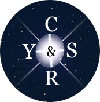cristoraul.org

cristoraul.org |
 |
 |
THE
SELEUCID EMPIRE
HOUSE OF SELEUCUS
Edwin Robert Bevan
3.- PERDICCAS (c. 360-321 B.C.) 4.- EVENTS IN THE EAST, 321-316 B.C.
5.- SELEUCUS CONQUERS THE EAST
6.- FROM ISSUS
TO THE DEATH OF SELEUCUS
10.-SELEUCUS II
(KALLINIKOS) AND SELEUCUS III (SOTER)
15.- THE FIRST
YEARS OF ANTIOCHUS III (223-216)
17.- THE RECONQUEST
OF THE EAST
18.- THE CONQUEST
OF PALESTINE
23.-ANTIOCHUS IV
AND THE CONQUEST OF EGYPT
24.-ANTIOCHUS THE GOD MANIFEST
26.-ANTIOCHUS V EUPATOR AND THE ADMINISTRATION OF LYSIAS
28.-ALEXANDER I AND THE PTOLEMAIC ASCENDANCY
32. GOVERNMENT, COURT AND ARMY
PREFACE
THERE is much to discourage an attempt to write
a history of the Seleucid dynasty. It will be only too apparent how often the
narrative must halt for deficiency of materials, how the picture must be
disfigured by blanks just where they are most vexatious. I hope, however, that
if the reading of this book makes these disabilities felt, the question
prompted at the conclusion will be, not “Why has such an attempt been made?”
but “How comes it that such a subject has been neglected so long”. If the book
itself fails to make clear how closely the subject touches us, as students of
the world, as Christians and as Englishmen, it would be absurd to think that a
preface could do so. It is indeed surprising, defective though the materials
are, that the Seleucid dynasty has not been made as a whole the subject of a
special study since the Jesuit Frolich wrote his Annales compendiarii regum
et rerum Syria in the middle of the eighteenth century (1744). In recent
times it has only been treated in works dealing with the “Hellenistic” epoch
generally, or in catalogues of the Seleucid coinage, such as Mr. Percy
Gardner’s Coins of the Seleucid Kings of Syria in the British Museum (1878) and M. Ernest Babelon's Rois de Syrie, d'Arménie et de Commagène (Catalogue des monnaies grecques de la Bibliotèque National), Paris,
1890. Of works dealing with the history of the Greek world between the death of
Alexander and the establishment of the Roman Empire an English reader has but
few at his disposal. When one has named the latter part of Thirlwal’s History
of Greece, some of Professor Mahaffy’s books, The Story of Alexander’s
Empire, Greek Life and Thought, and the translation of the last volume of
A. Holm’s Greek History, one has, I think, named all that are of
account. But Bishop Thirlwall’s History, however excellent for its day, was
written more than fifty years ago, and the works of Mr. Mahaffy and A. Holm,
full as they are of suggestion and of the breath of life, are obliged by their
plans to be sketchy. In German we have the standard work of J. G. Droysen, the Geschichte
des Hellenismus, brought up to date in the French translation of M. A.
Bouch-Leclercq (1883-85). This treats the history of the Seleucids to the
accession of Antiochus III. We have also in progress B. Niese’s
Geschiste‘s Geschichte der griechischen und makedoniscshen
Staaten, the second volume of which (1899) carries the history to the end
of the reign of Antiochus III, and J. Raerst’s Geschiste ddes
hellenistischen Zeitalters, of which vol. 1. appeared last year (1901);
this, however, only covers the life of Alexander. Besides these regular histories,
there are numerous articles and monographs on particular parts of Seleucid
history, references to some of which will be found in the footnotes of this
book at the appropriate places. One may only name here, as the most important,
the articles in Pauly’s Real-Encyclopaedia der classischen
Altertumswissenschaft, re-edited by G. Wissowa (in progress since 1894).
One’s obligations to Droysen and Niese are, of course, so constant and
extensive, that they must in the majority of cases be taken for granted; it is
where one’s own conclusions do not altogether tally on some point that they are
in many cases referred to a circumstance which may give the work of a younger
writer an appearance of presumption, which is far from the truth. M.
Haussoullier’s book on the history of Miletus under Seleucid rule, which has
come out within the last few days, I have not yet been able to read.
I must acknowledge the friendly help given me
by Mr. D. G. Hogarth, who was good enough to struggle with some of my MS. when
it was in a desperately amorphous stage, and by Mr. G. F. Hill of the British
Museum, by whose advice I have been guided in choosing the coins for the
plates; I owe to Mr. Hill also my knowledge of the superb bust which has
furnished the frontispieces. I have had the advantage of discussing some
numismatic questions with Mr. G. Macdonald of Glasgow, who will shortly publish
important work on the Seleucid coinage (in vol. III of the Catalogue of
Greek Coins in the Hunterian Collection). My brother, Professor Ashley
Bevan, has given me the benefit of his special knowledge in an attempt to write
the Semitic and Persian names on an approximately uniform system.
It is tiresome that at this date it is still
necessary to explain one’s transcription of Greek. On the principle of not
giving forms which no one could pronounce in ordinary conversation without
pedantry Seleukos, etc. I have in proper names followed the usage, consecrated
by the English literary tradition, of writing the Latin form. In the case of
words not proper names I have transliterated the Greek. Surnames of kings and
gods are in a sort of intermediate category, and here I have been inconsistent.
But it is inevitable that where two distinct systems are in use joins should
appear.
E.R. B. November 1902.
|
|